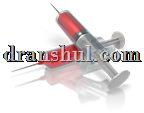Swine Flu is back . People are increasingly seen with fever,cough,cold .Many confirmed positive cases have been reported and sadly few deaths are also reported but in reality is the disease that terrible or just media hype or is it pathetic government response to H1N1 outbreak leading it to form epidemic compounded with half baked knowledge makes this treatable disease – a terrible one.
I have tried to debunk most common myths surrounding H1N1 or Swine Flu. Colleagues working with medicine and infectious disease departments have helped me in compiling this post.
What is Swine Flu: Swine Flu or H1N1 is caused by a influenza virus which primarily infects respiratory tracts of pigs but due to easy mutation (change) viruses are able to transmit among humans .
Why Swine Flu is termed as H1N1: Swine flu is a Influenza A virus. H and N are actually two  main surface antigens ,H1(hemagglutinin type1 ) and N1 (neuraminidase type ),found on its surface.Recent investigations have revealed some eight types of RNA strands ,One derived from human flu strains,two from bird (avian) strains and five from swine strains.This H1N1 strain was first reported or isolated in Mexico.
main surface antigens ,H1(hemagglutinin type1 ) and N1 (neuraminidase type ),found on its surface.Recent investigations have revealed some eight types of RNA strands ,One derived from human flu strains,two from bird (avian) strains and five from swine strains.This H1N1 strain was first reported or isolated in Mexico.
Swine Flu Symptoms:
- Swine flu presents with symptoms similar to most influenza infections: fever of more than 100°F with cough or sore throat in the absence of any other main cause.Mild or uncomplicated flu or Swine Flu is characterized by fever, barking cough, sore throat, nasal discharge, muscle pain, headache, chills, malaise,decrease appetite and rarely diarrhea and vomiting. In mild cases, there is no shortness of breath.
- Progressive swine flu is characterized by above symptoms along with chest pain, increased respiratory rate, decreased oxygen in the blood, tough(labored) breathing in children, low blood pressure, confusion, altered mental status, severe dehydration and exacerbation of underlying asthma, renal failure, diabetes, heart failure, angina or COPD.
- Severe or complicated swine flu is characterized by respiratory failure, requirement of oxygen or ventilator, abnormal chest x-ray, inflammation of the brain, lowering of blood pressure to less than 60 and involvement of the heart muscle. These patients will have persistent high fever and other symptoms lasting more than three days.
- Death mainly occurs from secondary infections involving lungs- new and stronger antibiotics are use to treat such extreme cases.
- Swine Flu or H1N1 is correctly diagnosed by locating an specific antigen related to virus type. FDA approved a commercially approved test in 2010 which diagnosed H1N1 in 4 hours.
- The diagnosis is confirmed with a lab test using rRT/PCR technique.
How to safe guard from Swine Flu:
- The virus spreads through droplet infection and spreads with a person coughs, sneezes, sings or speaks. The virus can cover only a distance of 3 to 6 feet.
- Stay 3 feet away from the person who is coughing.
- The standard prevention is respiratory hygiene, cough etiquette and hand hygiene.
- Hand washing should be performed before and after every patient contact or infectious material and before putting and after removing gloves.
- Hand hygiene can be performed by washing with soap, water and with alcohol based hand drops.
- If hands are visibly soiled, they should be washed with soap and water.
- Patients should be placed in a private room or area. The health care staff should wear a face mask while entering the patient’s room. When leaving the room, the health care workers should remove the face mask, dispose it off and then perform hand hygiene.
- Patients should wear a surgical mask and should be aware of respiratory hygiene, cough etiquette and hand hygiene.
Treatment For Swine Flu:
- The most effective treatment is prevention through vaccination. Two types vaccines are available Injectable and Nasal spray vaccine,with former being more potent. People need to understand that vaccines are no magic drops they to give unwarranted side effects.
- Injectable Swine Flu or commonly known as Flu shot may cause redness,soreness,minor swelling at the injection site,low grade fever,nausea and body ache.
- Nasal spray Swine Flu may cause low grade fever, running nose,headache,nausea vomiting,cough and sore throat.
- Some anti vitals medications have given promising results in control and prevention of Swine Flu.
- Many physicians suggest use of multi vitamins,good hydration and plenty of rest,though these precautions will not prevent swine flu instead strengthen immune system to fight infection and decrease the effects.
- As these posts are for general public awareness hence as a policy matter at dranshul.com, writers are not allowed to advice treatment or name any sort of medication .
Who are considered high risk group for Swine Flu:
Ideally all should be vaccinated but when supply is limited or there is a out break,following should definitely be vaccinated.
- All children from 6 months to 4 years.
- All 50 years and above.
- Immunosuppressed including AIDS.
- All diagnosed with respiratory conditions,cardiovascular,renal,hepatic, hematological ,neurological and metabolic conditions that includes diabetes.
- Pregnant women.
- All health care professionals .
- All obese.
Swine Flu is caused by ingestion of pork meat.
A myth swine is not spread by eating pork meat.
Any queries to this or any post are welcome.


{ 0 comments… add one now }